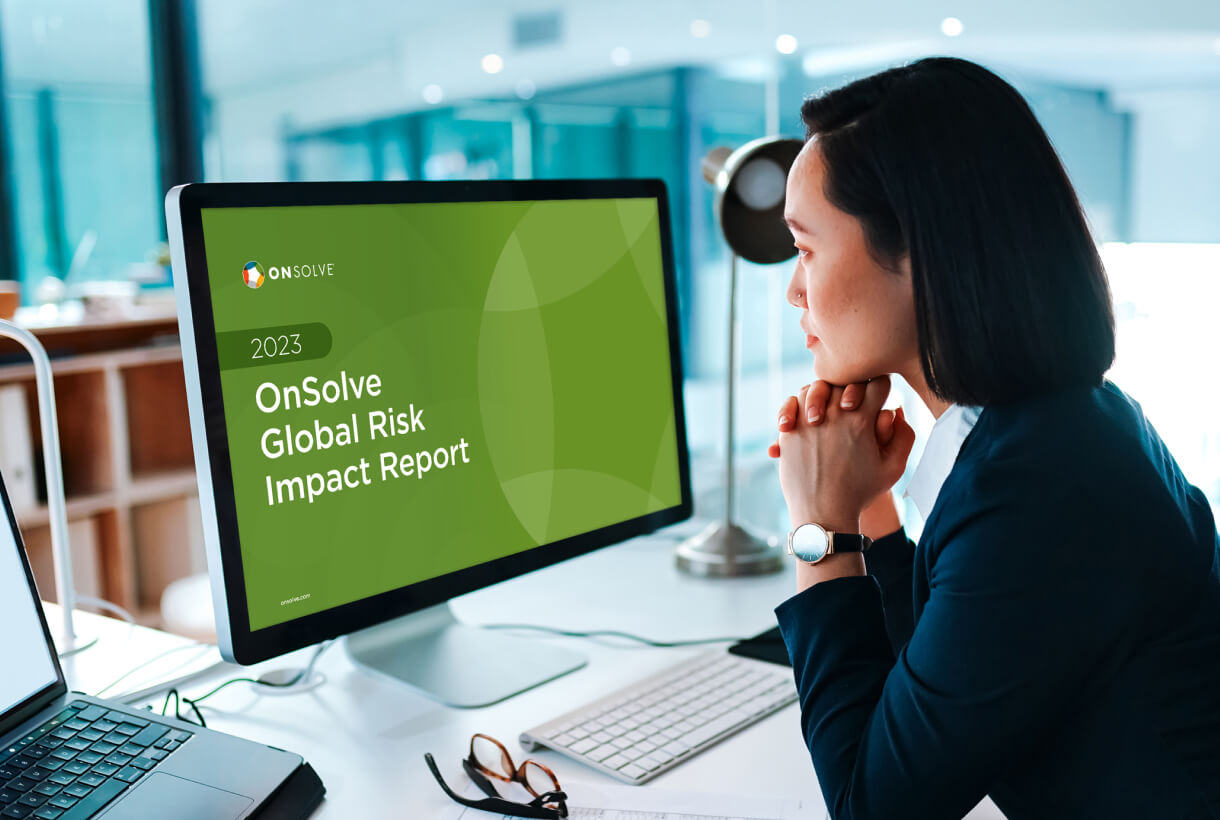Geopolitical instability is everywhere—from the war in Ukraine to the Israel-Hamas war to mounting pre-election tensions in the U.S. And it’s affecting everything. From unpredictable international supply chains to spikes in local gas prices, organizational leaders are battling the consequences of global conflict daily.
If it feels like you’re holding your breath for the next unprecedented upset, you’re not alone. In 2023, the escalation of geopolitical risk was identified as one of the top three trends to affect how CEOs direct their organizations, with 51 percent listing it as one of the leading external disruptors. In addition to CEOs, institutional investors cited geopolitical bad actors as the largest macroeconomic risk for 2024.
It’s clear we’ll face geopolitical instability for the foreseeable future. To prevail in such a volatile climate, organizations and government agencies need to widen their focus beyond risk management to resilience management.
Rather than moving from one risk to the next, resilience management takes a holistic approach to addressing the threat landscape as it evolves. When instability is a constant, now’s the time to empower your organization’s future. Help your people and operations hold steady with cohesive plans, practices and systems.
4 Reasons Why (and How) to Practice Resilience Management
1. Changing Times Call for an Agile Approach
The new year holds many unknowns. Looking back at 2023, by September more than 114 million people worldwide were displaced due to conflict, persecution and human rights violations. The use of generative artificial intelligence (AI) and large language models (LLMs) accelerated, with 79 percent of business professionals reporting some exposure. Meanwhile, the stock market was affected by various large-scale spreads of misinformation involving this rapidly developing technology.
In a reality marked by constant change and tension, it’s not enough to focus on prevention. Truly uncontrollable risks like geopolitical instability and the spread of misinformation will continue to occur. With so many unknowns, how will leaders determine what information they can trust, where it might impact operations and how best to handle it?
Resilience management answers these questions with a multi-pronged approach. Thorough planning, careful resource management and agile response capabilities are all necessary components. Technology can optimize efforts in each of these areas.
A unified platform for critical event management will give organizational leaders a way to rapidly:
-
- Detect existing and emerging threats.
- Analyze relevant data from verified sources.
- Enable response teams with accurate, real-time information.
- Provide necessary resources for effective incident management.
- Communicate with all stakeholders around the clock.
Geopolitical conflicts are unpredictable. While you can’t know or control what’s coming, you can take advantage of technology that gives your organization the ability to get ahead and gain a more accurate reading of potential events.
2023 OnSolve Global Risk Impact Report
Discover how proactive preparation today can mitigate risk and improve outcomes tomorrow.
2. To Fight Confusion, You Must Strengthen Communications
As we learned during the pandemic, in times of grave uncertainty people crave connection. Whether facing local protests or a riot at a major center of commerce abroad, every leader should be able to reach their people at a moment’s notice, with just a few clicks on any device.
Once you can reliably make contact, the question becomes: Will your people recognize and heed your alerts? With the rise in misinformation, many people are wary of communications from unrecognized senders. Eighty-three percent of American adults believe fake news is a major problem, and a majority say it creates uncertainty about news topics, such as the conflict between Israel and Gaza.
To avoid your alerts being miscategorized as part of this noise, your messages have to be recognized as a valid source of information, from a trusted authority. A mass notification system resolves this issue. An intuitive interface, easy enrollment and the ability to schedule emergency communications drills will allow users to build system familiarity in advance. Options for recipients to mark themselves safe or request help, along with secure two-way messaging, ensure everyone can maintain in contact.
A strong resilience management strategy includes keeping everyone informed as major geopolitical developments unfold. When communications are interactive and ongoing (rather than static and limited) your people know what’s going on, what they need to do and how to reach out.
3. Earlier Detection Enables Swifter Correction
As you shift into your resilience management strategy and embrace proactive risk mitigation, the big picture will begin to come into focus. What does it look like? The moving parts will form a rapid cycle of Discovery-to-Recovery:
-
- Detect the threat.
- Respond appropriately.
- Recover promptly.
This cycle is one of the primary goals of resilience management. When your organizations can detect threats earlier, it’s easier to pivot and prevent damages from escalating. An AI-powered and analyst-vetted risk intelligence solution can keep pace with changing geopolitical factors at a speed human-only monitoring simply can’t match.
Advanced notice makes it possible to adjust operations, resources, staffing, supply chains and customer relations faster. That’s how you navigate crisis with confidence.
Geopolitical, cyber and physical threats pose potential and actual financial exposure and create an interruption in an organization’s ability to execute. This has created a heightened expectation for understanding, preparedness and readiness around corporate risks and structures.
- Mike Mayoras, Board of Director at EPAM Systems Inc. (NYSE:EPAM), Softeon and OnSolve
2023 OnSolve Global Risk Impact Report
4. By Starting Now, You Can Reap Lasting Rewards
Risk managers can address boardroom concerns by acting now to put resilience management plans and technology in place. It’s the only way in today’s environment to build trust and confidence across all levels of your organization or agency. To determine what you need, start with if/then scenarios and think through the impacts of geopolitical threats, in the near future and long term.
If concentrated protests or an armed conflict causes roads to become unsafe near one of your major operational centers, how would you:
-
- Send alerts in real time?
- Tell response teams where to find resources?
- Keep everyone updated as the situation changes?
- Geo-target messages to people in the area of impact?
- Translate alerts into other languages?
- Customize messages for different recipient groups?
- Verify emergency contact information is current?
These questions are only a starting point. Each risk scenario will require you to address unique challenges. It’s important to think through both direct impacts as well as cascading risks and work these into your response and recovery plans.
This attention to resilience management will empower your teams with greater confidence, allowing them to act quickly to keep employees and communities safe.
It’s time to steady your organization to withstand geopolitical instability. The OnSolve Platform can help you build strength from within. Contact us to learn how.


